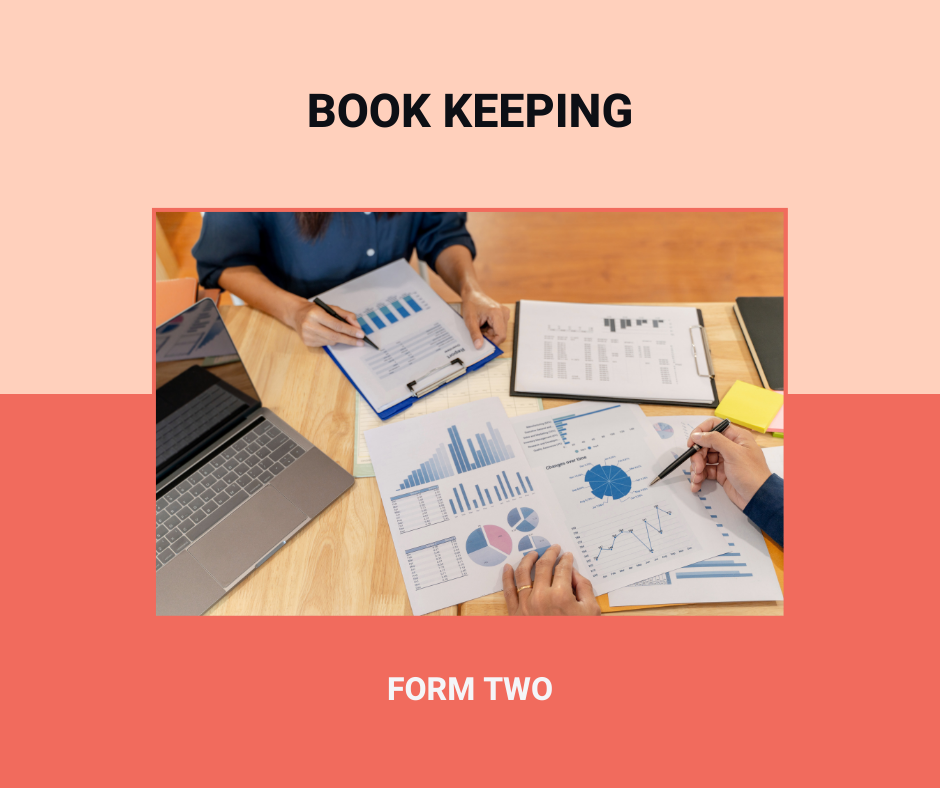What i will learn?
By the end of this course, students will:
- Master advanced double-entry bookkeeping, including handling complex transactions and correcting errors.
- Prepare and reconcile control accounts for debtors and creditors.
- Prepare and analyze financial statements for sole proprietorships.
- Understand partnership accounting, including formation, profit sharing, and financial statements.
- Account for non-trading organizations such as clubs and societies.
- Prepare and analyze manufacturing accounts.
- Account for bad debts and provisions for doubtful debts.
- Convert single entry records to the double-entry system.
Join us in Bookkeeping Form Two as we deepen your understanding of bookkeeping and accounting principles, preparing you for higher studies and careers in accounting and finance.
Requirements
To ensure a successful learning experience, students are expected to meet the following requirements:
- Completion of Bookkeeping Form One: Proficiency in the foundational concepts of bookkeeping covered in Form One.
- Advanced Numeracy Skills: Proficiency in advanced arithmetic and mathematical concepts.
- Notebook and Stationery: Keeping organized notes and practicing exercises.
- Access to Learning Materials: Textbooks and supplementary resources for in-depth study.
- Internet Access: Reliable internet connection for accessing online lessons and resources.
- Analytical Skills: Ability to analyze complex transactions and apply advanced accounting principles.
Description
Welcome to Bookkeeping Form Two on Edukea! This course builds on the foundational concepts introduced in Form One, delving deeper into bookkeeping practices and accounting principles. Students will enhance their skills in recording, summarizing, and analyzing financial transactions to maintain accurate financial records.
Topics Covered:
- Advanced Double Entry System: Complex Transactions, Adjusting Entries, and Correction of Errors
- Control Accounts: Debtors and Creditors Control Accounts, Reconciliation, and Uses
- Financial Statements: Preparation and Analysis of Sole Proprietorship Accounts
- Partnership Accounts: Formation, Profit Sharing, and Financial Statements
- Non-Trading Organizations: Accounting for Clubs, Societies, and Non-Profit Organizations
- Manufacturing Accounts: Preparation and Analysis of Manufacturing Accounts
- Accounting for Bad Debts: Provision for Doubtful Debts and Bad Debt Recovery
- Introduction to Incomplete Records: Single Entry System and Conversion to Double Entry
